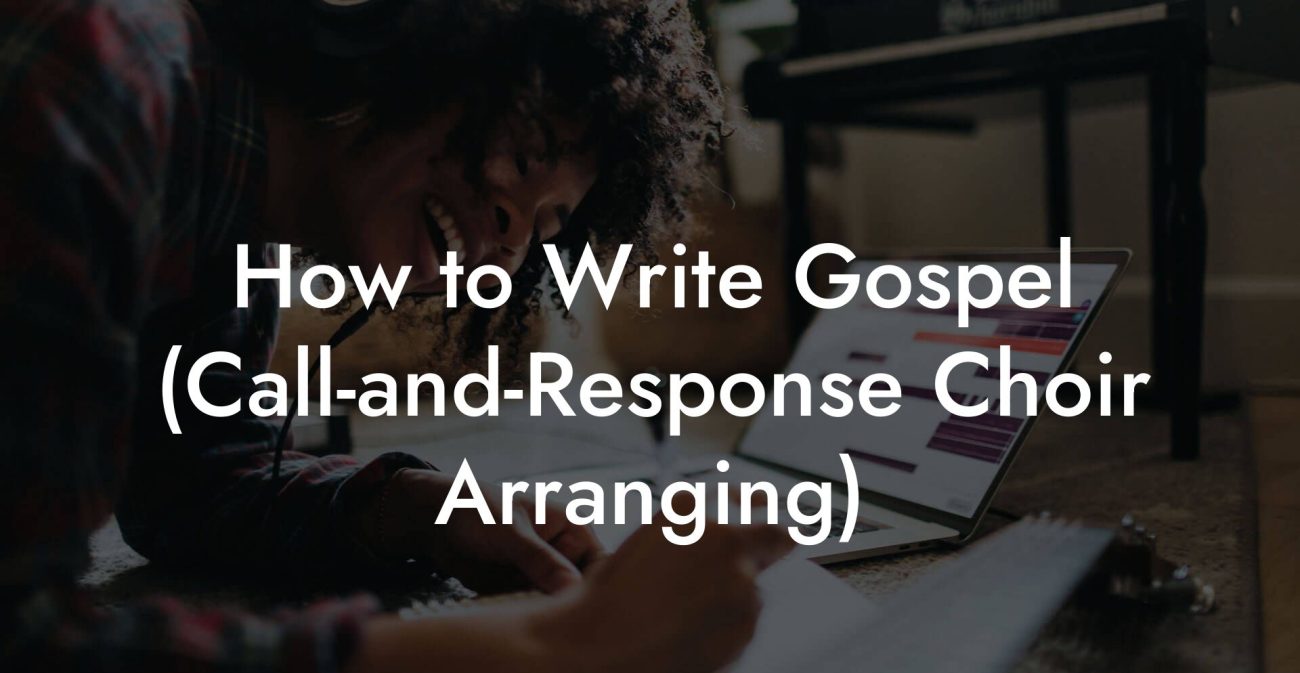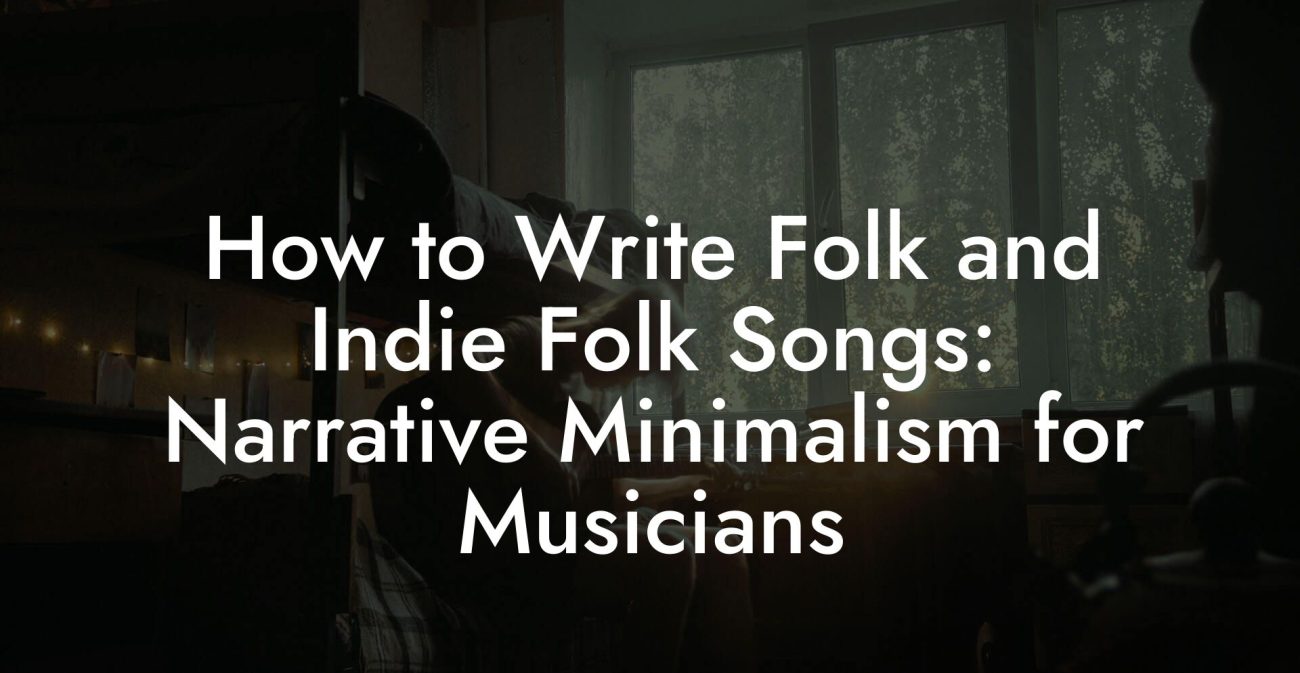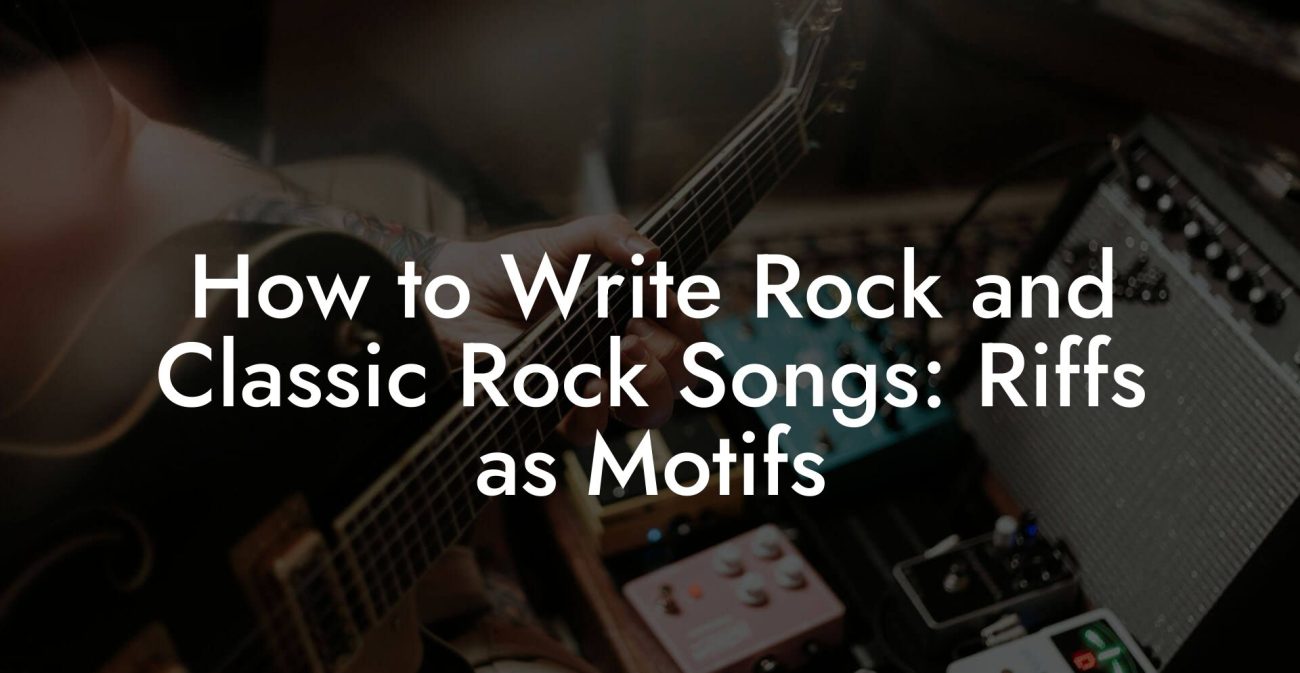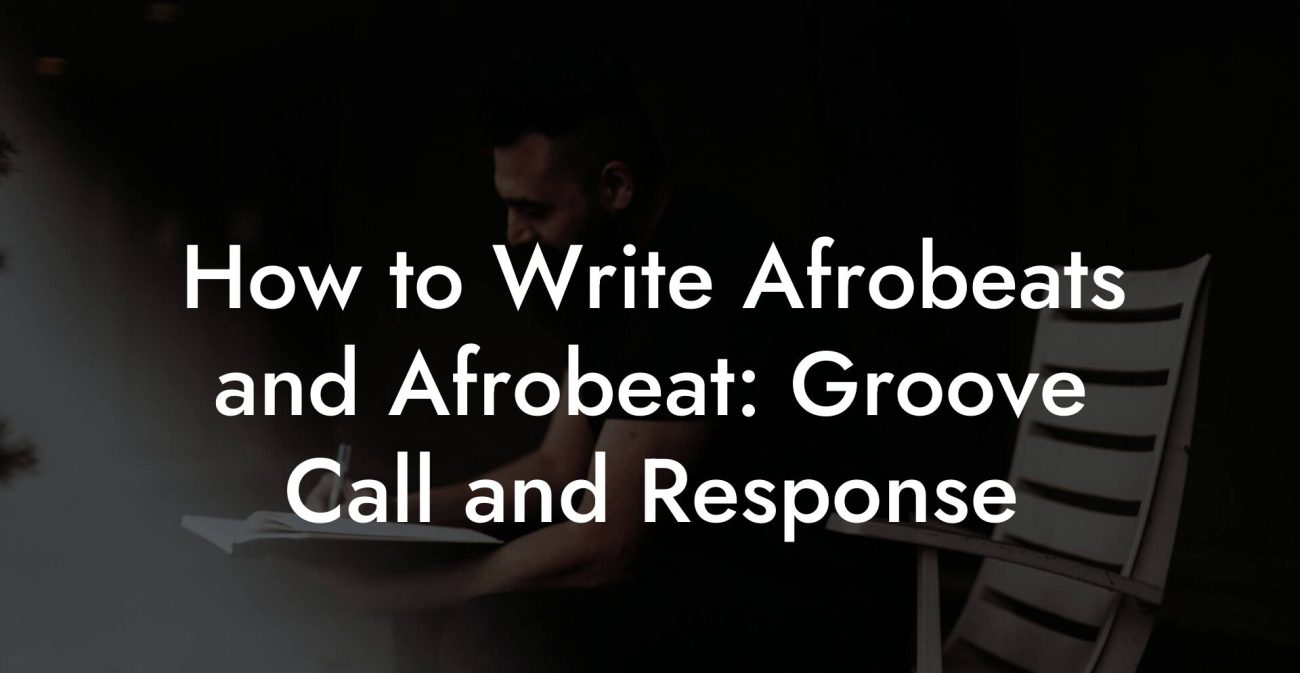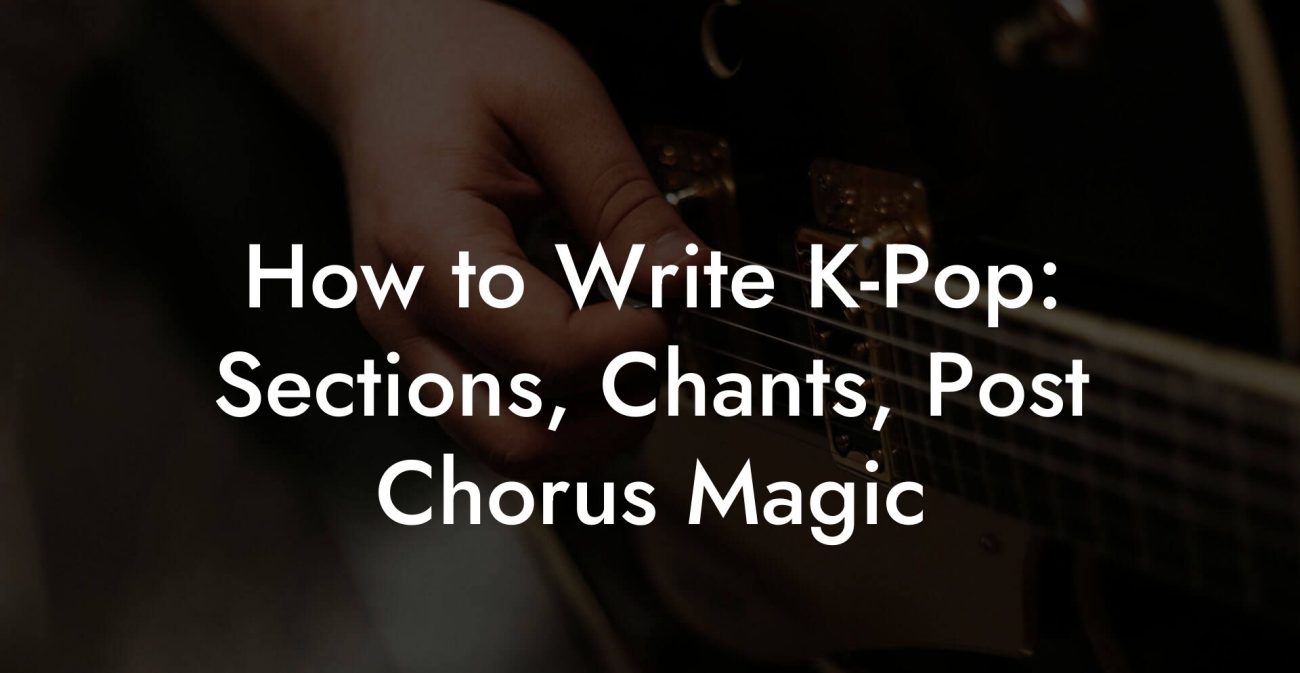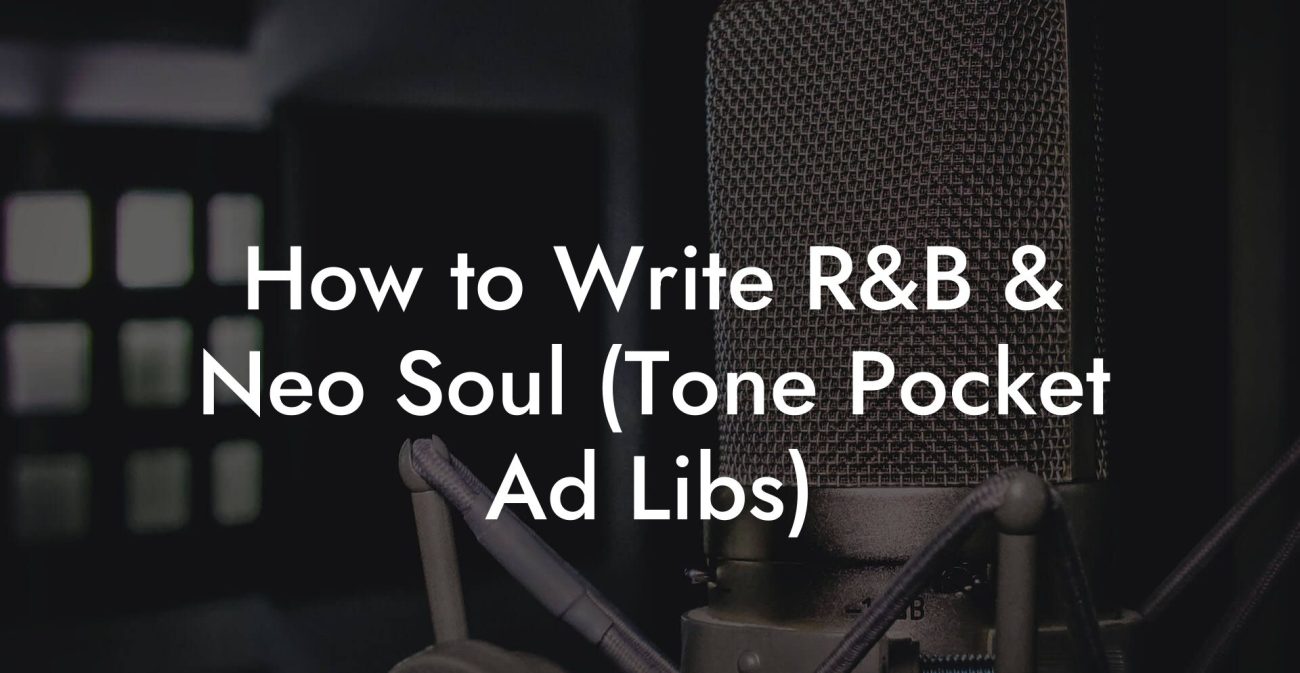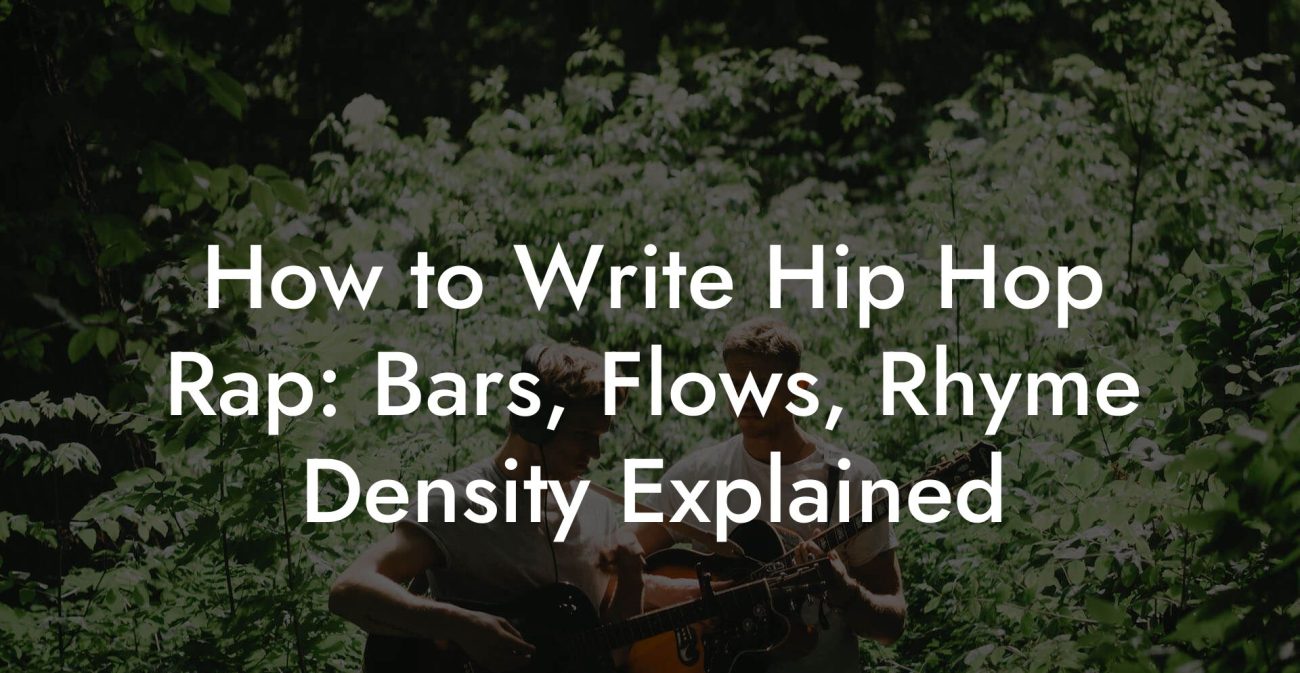Songwriting Advice
How to Write Reggaeton (Dembow Hook Math Spanglish Tips)
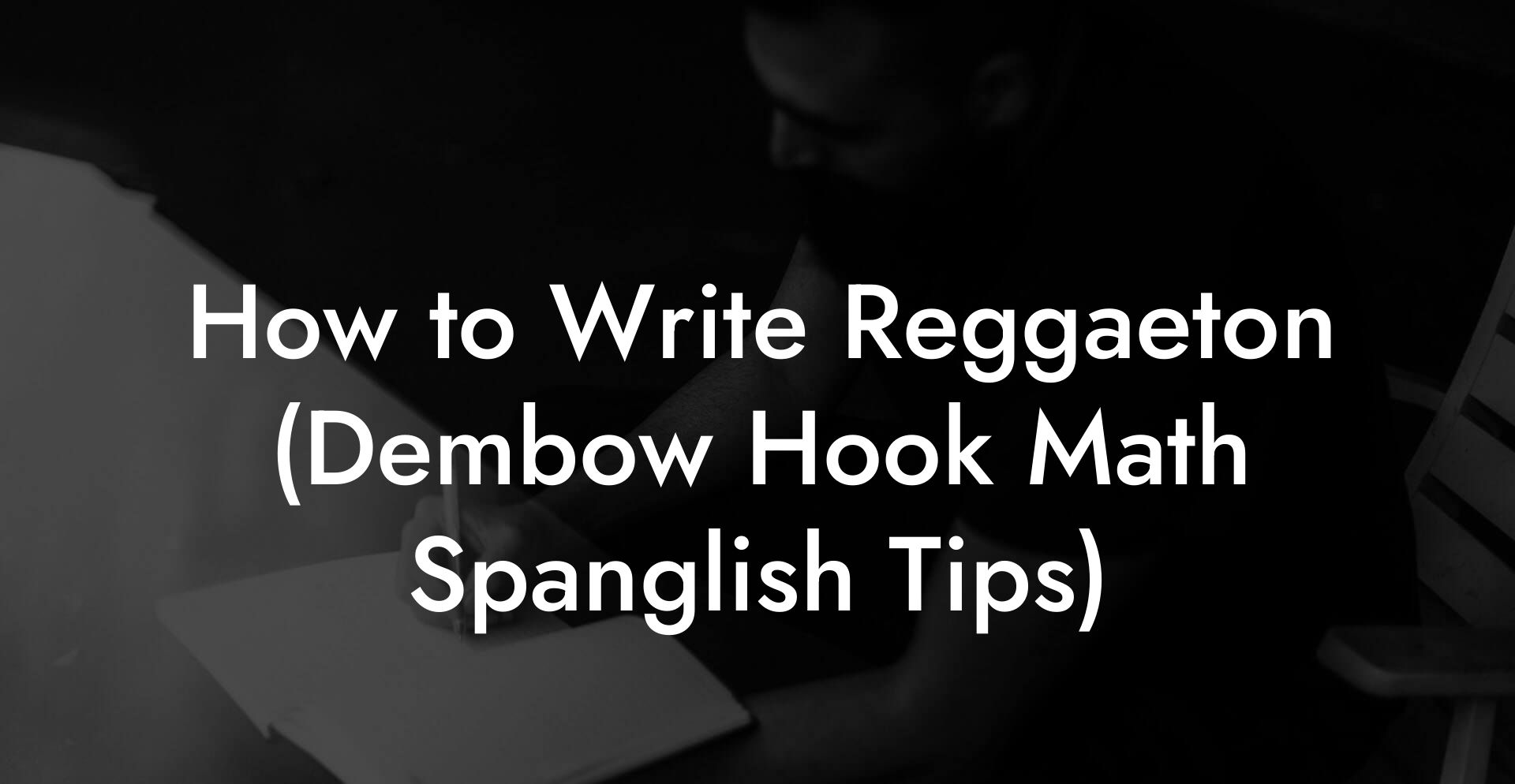
You want a track that makes people move instantly. You want a dembow that slaps in the club and a hook that rings in group chats. You want lyrics that walk the line between street and sweet and sometimes fold both into one perfect line that people repeat without thinking. This guide is a brutal, hilarious, and useful toolkit for writing reggaeton songs that get plays, streams, and actual bodies on the floor.
Quick Interruption: Ever wondered how huge artists end up fighting for their own songs? The answer is in the fine print. Learn the lines that protect you. Own your masters. Keep royalties. Keep playing shows without moving back in with Mom. Find out more →
Quick Links to Useful Sections
- What Is Reggaeton Really
- Key terms explained
- Dembow 101: The Rhythm You Must Know
- Dembow pattern explained simply
- Hook Math: How to Place the Hook So People Sing It
- Simple syllable math for reggaeton hooks
- Spanglish Without the Cringe
- Rules for Spanglish that does not sound desperate
- Lyric Themes That Work in Reggaeton
- Melody and Prosody for Reggaeton
- Melody rules that actually help
- Chord Progressions and Harmony
- Beat Production Essentials
- Kick and bass
- Percussion and groove
- Arrangement flags
- Writing Features and Collaborations
- Lyrics and Rhyme Choices
- Modern rhyme tactics
- Micro Prompts and Drills to Write Faster
- Real World Scenarios and Examples
- Scenario A: Club call and response
- Scenario B: Late night heartbreak
- Scenario C: Brag track with a feature
- Prosody Doctor for Reggaeton
- Common Mistakes and Quick Fixes
- Finish Workflow You Can Use Today
- Legal and Industry Tips
- Quick Checklist Before You Release
- Action Plan You Can Use This Week
- Reggaeton FAQ
Everything here is written for artists and writers who want results fast. We break the rhythm into simple math. We explain dembow, BPM, riddim, and Spanglish with analogies you actually understand. You will leave with melodies, lyric moves, arrangement maps, production flags to watch, and a practical workflow to write a strong reggaeton topline today.
What Is Reggaeton Really
Reggaeton is music that grew from the Caribbean streets and club culture with influences from reggae, dancehall, hip hop, Latin trap and Latin pop. At its core reggaeton thrives on a rhythmic engine that makes people move. The musical identity is less about complicated chords and more about groove, vibe, and vocal personality. The history matters, so learn it, respect it, and do not appropriate without honoring creators and contexts.
Key terms explained
- Dembow A rhythm pattern from Jamaican dancehall that became the heartbeat of reggaeton. Think of it as the drum pattern your body understands even if your brain does not.
- Riddim Jamaican word for instrumental. In practice it means the backing track or groove that the vocals ride over.
- BPM Beats per minute. Reggaeton usually sits between 88 and 105 BPM when played as original tempo. Spotify and DJs often time stretch to around 100 for club energy.
- Topline The melody and lyrics sung over the beat. If the producer builds the car the topliner is the person who decides whether it smells like perfume or motor oil.
- Spanglish Mixing Spanish and English inside lyrics. Used for flavor and to reach bilingual audiences. Do it with respect and clarity.
Dembow 101: The Rhythm You Must Know
If you do not internalize dembow you will write words that float above the beat and not into people. Dembow has a predictable pulse that listeners expect. Learn the pattern by counting and clapping it for hours until your knees remember.
Dembow pattern explained simply
Count in four beats per bar. The classic pattern emphasizes a syncopated hit on beat one and a smaller hit just after beat two. A basic notation could be felt as: boom rest clap clap rest clap rest clap. That reads clumsy on paper and perfect in the body. Think of it like a heart that does a little stutter before it finishes the bar.
Practical drill
- Set a metronome at 95 BPM.
- Clap on beat one with your hands. Say boom.
- On beat two clap shortly after and then again on the and of two.
- On beat three maintain silence then hit a light clap on the and of three. On beat four hold back and then finish the bar with a short snap on the and of four.
Repeat this until you can feel it in your chest while doing other tasks. If you can hum a melody and the dembow sits under it like a second heartbeat then you have started correctly.
Hook Math: How to Place the Hook So People Sing It
Hook math is an ugly but effective way of saying you must place words where the rhythm wants them. Hooks that land on the right syllables feel inevitable. Hooks that land in the wrong places feel like someone tripping on a rug. We will teach you to do math without becoming a professor.
Simple syllable math for reggaeton hooks
Find the core hook phrase like a title. Turn it into 2 to 6 syllables. Fit it into the one bar space in the chorus where dembow emphasizes strong syllables. Example titles: Mi Cama, Pa Que Me Llamas, Contigo Hasta el Fin. Count syllables and mark the stressed syllable in each word.
Example
- Title: Pa Que Me Llamas. Syllable count: Pa(1) Que(2) Me(3) Lla-mas(5). Stress on Lla.
- Place the stress on the first strong beat of the chorus by elongating that syllable. The rest of the words fill the smaller spaces.
How to practice
- Take five title candidates. Count the syllables in each and mark the stressed vowel.
- Tap the dembow pattern with your foot. Sing each title over the pattern and see which one sits naturally over the strong beats.
- Prefer titles with open vowels like ah oh ee. They translate better when sung loud in a club.
Spanglish Without the Cringe
Spanglish is not a gimmick when used correctly. It is a cultural tool that expands audience reach and texture. Bad Spanglish sounds basic and lazy. Good Spanglish sounds like real people speaking in real contexts.
Rules for Spanglish that does not sound desperate
- Use English words that resonate globally. Words like baby, party, money and love travel well. Avoid cultural or legal terms that lose meaning.
- Switch languages for emotional emphasis. Use Spanish for storytelling and English for punch lines that land in the hook.
- Keep grammar honest. Natural code switching is messy. Do not fake grammar to force a rhyme. Listeners will smell that pose immediately.
Real life example
Imagine you are in a kitchen at 3 a.m. You say a line in Spanish about missing someone. Then the phone buzzes. You answer with a single English word because the buzz demands a quick reaction. That is Spanglish with context. That is how people actually speak.
Lyric Themes That Work in Reggaeton
Reggaeton lives in clubs cars beach parties and late night relationships. The themes repeat because they work. Do not confuse repetition with laziness. You make it interesting with detail tone and a point of view.
- Party and dance Make the hook easy to chant. Use verbs that demand action. Use short commands and images people can imitate with movement.
- Romance and seduction Be specific. Use objects and timing. Describe a scarf a fragrance a light color. Those details are shareable.
- Street and pride Speak in direct lines. Name places that matter. Give the listener a reason to shout the name of a neighborhood.
- Heartbreak and reflection Use small moments not paragraphs. A single image of a burnt coffee cup can carry an entire verse.
Melody and Prosody for Reggaeton
Melody in reggaeton often stays mid range and leans on repetition. The best toplines marry melody with the dembow so each stressed syllable lands with a rhythmic satisfaction.
Melody rules that actually help
- Make the chorus melody simple and repeatable. People should sing it after one listen.
- Use a small leap into the hook then stepwise motion to land. The leap gives lift and the steps give comfort.
- Keep verses more rhythmic than melodic. Treat verses like spoken lines with melodic color at the end.
- Prosody rule. Speak your lyric aloud, mark natural stress and match strong syllables to downbeats or elongated notes.
Exercise
- Loop the dembow for 60 seconds.
- Sing nonsense vowels and hum shapes until you find a repeatable hook melody.
- Replace the vowel nonsense with the hook phrase and adjust syllable placement until it breathes with the beat.
Chord Progressions and Harmony
Reggaeton is not about complex jazz changes. The harmony tends to be simple on purpose so the vocal and rhythm remain the stars. Use minor keys for darker vibes and major keys for uplifting party songs.
- Common progression 1: i VI VII i in minor gives a moody feel that supports emotional hooks.
- Common progression 2: i VII VI VII loops keep motion without resolution which fits dance contexts.
- Major pop approach: I V vi IV keeps things bright and singable for crossover hits.
Production tip
Use sparse chords in verses with plucked tones. Open up on the chorus with sustained pads and an extra synth to create lift. The human voice then sits on top cleanly.
Beat Production Essentials
Producers will vary the drum sounds but the core ingredients remain: a strong kick, a clipped snare or clap, percussive shakers, and a low sub bass. Quality of sounds and pocket matter more than complexity.
Kick and bass
Use a kick that punches through the mix without stealing the sub. Use sidechain compression from kick to bass to keep clarity. The sub should follow the root note of your chord progression and bend for accents in the chorus.
Percussion and groove
- Hi hats and shakers fill the top. Use slight timing variations for human feel. Quantized hats sound robotic in reggaeton unless you mean a trap fusion.
- Use congas and bongos to add Caribbean flavor and to help transitions between verse and chorus.
- Add percussive ear candy like a subtle rimshot or a vocal chop used as a percussive motif.
Arrangement flags
- Intro: Signature hook or a vocal chop. Make it recognizable in the first four bars.
- Verse: Strip back to kick and rhythm elements, keep space for vocals.
- Pre chorus: Add a small lift with percussion fills and a background pad.
- Chorus: Full rhythm, bass and melodic lead. Let the hook breathe for at least eight bars on first chorus.
- Breakdown: Remove bass or drums to create a vocal moment. Then bring everything back to maximize impact.
Writing Features and Collaborations
Features are central in reggaeton culture. Knowing how to write for a guest voice increases your chance of playlist traction. Match the feature to the moment and let each artist keep a distinct sonic chair at the table.
- Leave space in the chorus for ad libs. Features bring energy through short vocal tags.
- Give the feature a one minute window where they can show personality and cadence.
- Consider language balance. If one artist is Spanish dominant and the other is English dominant use Spanglish strategically.
Lyrics and Rhyme Choices
Rhyme matters, but the pocket matters more. Internal rhymes and short lines that bounce with the beat often work better than long perfect rhymes that kill flow.
Modern rhyme tactics
- Use family rhymes. Words that sound similar without being exact give freshness.
- Use internal rhyme within a line to create forward motion.
- Keep chorus lines short so clubs can shout them between drinks.
Line example
Verse line: La noche es larga y mi mente no para. The rhyme between larga and para is family rhyme that carries attitude without being tidy.
Micro Prompts and Drills to Write Faster
Speed produces truth. Use timed drills to create hooks and verse drafts without editing yourself into a coma.
- Two minute hook drill Loop dembow and sing nonsense vowels for one minute. Pick a repeatable gesture and write a short hook in the last minute.
- Object drill Pick a single object in your room and write four lines where the object acts like a character in the relationship story.
- Spanglish switch Write the chorus in Spanish. On the second pass replace one key verb with an English word that changes tone.
Real World Scenarios and Examples
Concrete examples help you picture the song. Here are song skeletons and tiny lyric ideas you can steal and bend.
Scenario A: Club call and response
Hook: Pa que me llamas. Pa que me buscas. Pa que me miras si ya no me amas. Short lines. Repeatable. Each phrase lands on the dembow stress. The crowd can answer on the second phrase with a shout or clap.
Scenario B: Late night heartbreak
Verse: La cama guarda tu perfume que no deja dormir. Pre: El reloj miente y dice que no es tarde. Chorus: I call your name pero tú no vuelves. The mix of English and Spanish gives a private confession vibe and a public punch line.
Scenario C: Brag track with a feature
Hook: En la calle me respetan. Money talks. Feature comes in with a short 16 that name drops neighborhoods and cars. Keep the hook simple and the feature braggadocio compact.
Prosody Doctor for Reggaeton
Record yourself speaking the lines at conversation speed. Mark natural stress. Then sing the line over the beat. If a strong word falls on a weak beat you will hear friction. Fix either the word placement or the melody. Regularly repeat this because the ear is ruthless and honest.
Common Mistakes and Quick Fixes
- Too many words Cut words until the breath feels natural. The voice should not be racing to finish a line before the beat finishes it.
- Forcing Spanglish Only switch language where the emotional or rhythmic choice benefits the line. If you use English just to rhyme badly you have lost.
- Chorus that does not lift Raise the melody a third or add a sustained backing vocal to create lift. The chorus must feel brighter or heavier than the verse.
- Overproducing Remove elements until the dembow and vocal are clearly heard. Add back one element at a time and ask if it helps the hook.
Finish Workflow You Can Use Today
- Write one sentence that states the central feeling of the song. Keep it short and concrete.
- Choose a tempo between 90 and 100 BPM. Loop a dembow riddim for practice.
- Do a two minute vowel pass to find a melodic gesture for the hook.
- Write five title options. Count syllables and pick the one that fits the stress of the dembow.
- Draft a chorus of two to four lines that repeat a strong phrase. Keep the chorus melodic and repetitive.
- Draft a verse with three to four concrete images. Use a time crumb or place crumb.
- Make a demo with basic percussion a sub bass and the topline. Listen on headphones and in a car.
- Play it for two people who know reggaeton. Ask what line they remember. If neither remembers it, repeat the hook math.
Legal and Industry Tips
Reggaeton often draws from existing riddims and samples. Clear any samples. If you use a dembow loop that is not yours get permission. If you write a melody that resembles another well known hook consider changing the contour. The music industry pays attention and not just when you blow up in a club.
Publishing tip
Register compositions early. Split percentages with features and co writers before the song blows. It is awkward and sensible. Do the awkward paperwork now so you enjoy the champagne later.
Quick Checklist Before You Release
- Hook sits on dembow strong beats and is repeatable after one listen.
- Title is short easy to sing and appears in the chorus.
- Spanglish decisions have context and do not feel forced.
- Beat breathes for the vocal in verses and fills in the chorus.
- Feature parts are signed off and splits are agreed.
- Everything sampled has clearance or is replaced.
Action Plan You Can Use This Week
- Spend one hour clapping and internalizing the dembow at 95 BPM.
- Draft ten short hook titles. Count their syllables. Pick three that match the dembow pattern.
- Make a simple beat with a kick clap sub bass and shaker. Loop it for practice.
- Record a two minute vowel pass and force a hook onto the best gesture.
- Write a verse with three images and one time crumb. Run the prosody doctor on it.
- Make a demo and send it to two trusted listeners. Ask what line they remember. Iterate accordingly.
Reggaeton FAQ
What tempo should reggaeton be
Classic reggaeton usually sits between 88 and 105 BPM. A sweet spot for club energy is around 95 to 100 BPM. Tempo affects pocket so choose a speed that fits the vocal cadence you want. Faster BPM gives urgency and dance floor push. Slower BPM gives swagger and groove.
How do I write a reggaeton hook that sticks
Write a short phrase. Count syllables and place the stressed syllable on a strong beat of the dembow. Use repetition and open vowels like ah oh ay for easier crowd singing. Keep melodic range small so people can sing along after one listen.
Can I use Spanglish in my songs
Yes but do it with intention. Use Spanglish when it creates emphasis or mirrors how your audience speaks. Stay honest with grammar and aim for natural code switching. If you use English words just for trend you might lose authenticity.
Do I need a complicated chord progression for reggaeton
No. Simple progressions are fine. The genre prioritizes rhythm and vocal identity. Use minor progressions for mood and major progressions for brightness. Let the voice and percussive groove carry emotional weight rather than complex harmonic changes.
How do I make my dembow sound modern
Use layered percussion and live timing. Slightly humanized hi hats and shakers add life. Add a modern synth stab or vocal chop as a signature motif. Keep the low end tight with sidechain compression to the kick. A clean mix and a good pocket makes the rhythm modern more than novel sounds.
How do I write for a feature artist
Give them a clear 16 bars to show personality and distinct cadence. Leave space in the hook for their ad libs. Agree splits early and make sure their verse connects thematically to your concept. Contrast is your friend. Let the feature bring a different texture or language.
What are common lyrical topics in reggaeton
Party and dance romance seduction heartbreak street pride and flex culture. The difference between cliché and classic is specific detail and honest attitude. Use scenes and objects to create mental images that listeners can share and repeat.
How do I avoid copying existing reggaeton hits unintentionally
Stay away from melodic clichés you have heard on heavy rotation. Do a quick search for similar hooks and if something looks close change the contour. Use the prosody doctor to make original stress patterns. If you fear similarity consult a publisher or lawyer before releasing.




